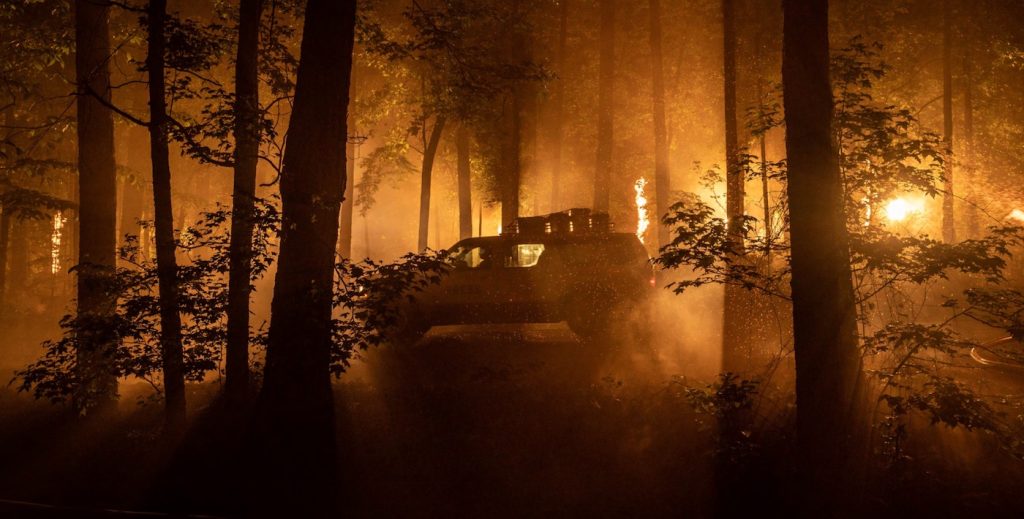“Civil War” Production Designer Caty Maxey on Designing an America in Ruins
Picturing the United States as a divisive hellscape juxtaposed with bucolic vistas of the East Coast, Civil War imagines a not-too-distant future in which Americans settle their differences by executing each other at close range. In the movie—in theaters now—writer-director Alex Garland follows four reporters (Kirsten Dunst, Wagner Moura, Cailee Spaeny, and Stephen McKinley Henderson) as they trek from New York to Washington DC so they can document the last days of the republic while insurgent “Western Forces” assault the White House.
Along the way, the journalists encounter one massacre after another.
To bring the heroes’ journey to life, Garland enlisted production designer Caty Maxey, who previously art-directed Jurassic World and Jason Bourne, to help lend a visceral verisimilitude to an American gone berzerk. Maxey spoke to The Credits about Jesse Plemons‘ shocking cameo, how she helped make the horrific travelogue feel all too plausible and more.
Civil War benefits from this ingenious structure in which all the over-the-top horrors are grounded in this classic road trip narrative.
That was actually the code name for this movie – “Road Trip.”
The journey begins in New York City, which is in shambles. How did you stage that?
The Brooklyn streets we shot in Atlanta. For that very first sequence, Alex wanted some clue that when we went around the corner, it was going to be chaos. You’re in normal Brooklyn for a few blocks, and then, “Oh my God!” So what’s the hint? Fire hydrants. There are maybe 20 hydrants over five blocks, and they’re all busted. Then you turn the corner, and all these people are outside a water truck fighting for water. We didn’t dwell on “Ooh, is that the perfect color?” but the guts of the scenery had to work. Like, if you’re going to blow something up and it’s a column made of concrete, you can’t use Styrofoam. You’ve got to put something that has the right texture, the right density. The underpinnings of the set were very specific.
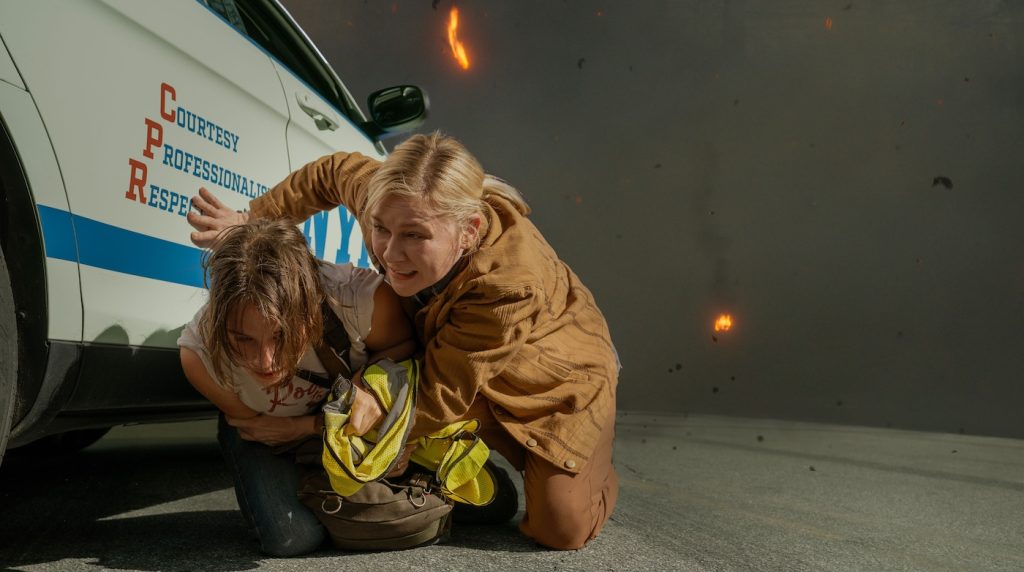

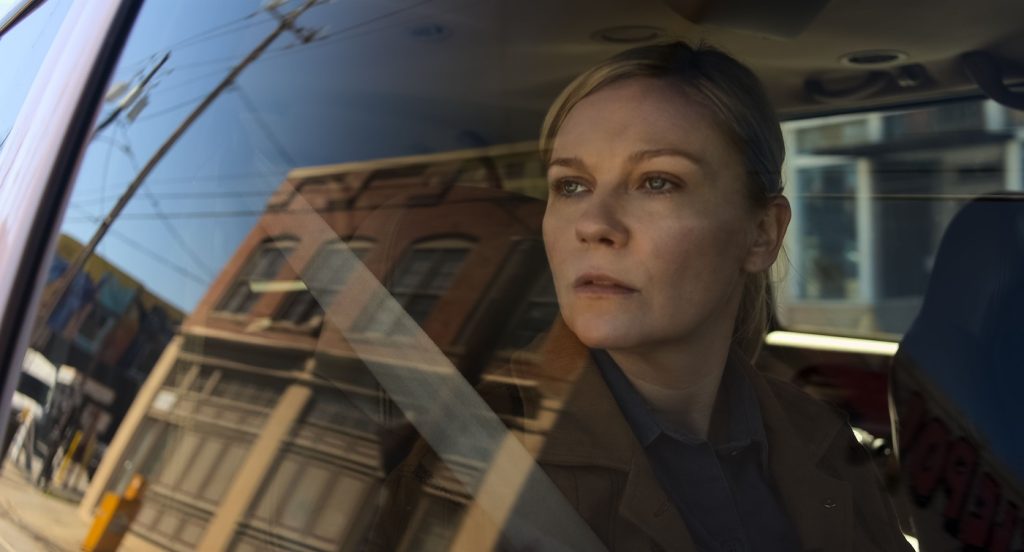

All that anarchy was meticulously planned?
Yeah. Like if you know a tank is coming through the gate, you’ve got to make sure you’ve got clearance on the top and sides unless you want the tank to bust through the gate, and then you’ve got to make the gate a little too small for the tank. These discussions went on constantly between visual effects, special effects, the stunt coordinator, our military liaison, the gaffer, the DP, and Alex just to make sure everybody was on the same page.
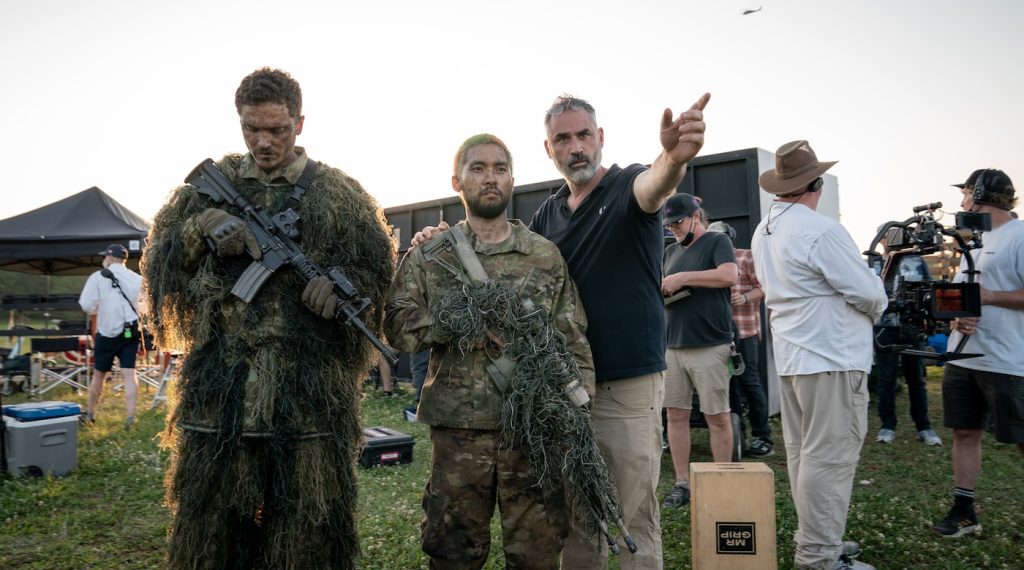

Once the reporters leave New York, they come across this abandoned shopping mall littered with corpses and wrecked cars. Where did you find that location?
That shopping mall was pretty close to our production offices in Atlanta. It had been abandoned two years ago except for one store, which was still open. We built a barricade so you couldn’t see their signage. We built three different structures. One was like a deli but just the foundation, and we put debris around it as if the place had just been blown up. The big building had other signage, but we didn’t want that [company] in there, so they added JCPenney in the post to make it more American. What’s more American than JCPenney, right? All the burning buildings in the background were visual effects. In spite of the horror, it was beautifully shot.
Then, the reporters arrive at this huge community of refugees living in tents and RV’s. What did you look at for reference?
We looked at camps just like the one in the movie because they do exist. Alex just ramped it up. We had all kinds of light sources because we didn’t want people to sit in the dark in the cold. We wanted to think of it as a home. The set decorator did a great job finding stuff from lawn chairs to coolers. We had our production assistant learn to knit so she could sit and knit these things because that’s what these people would do.
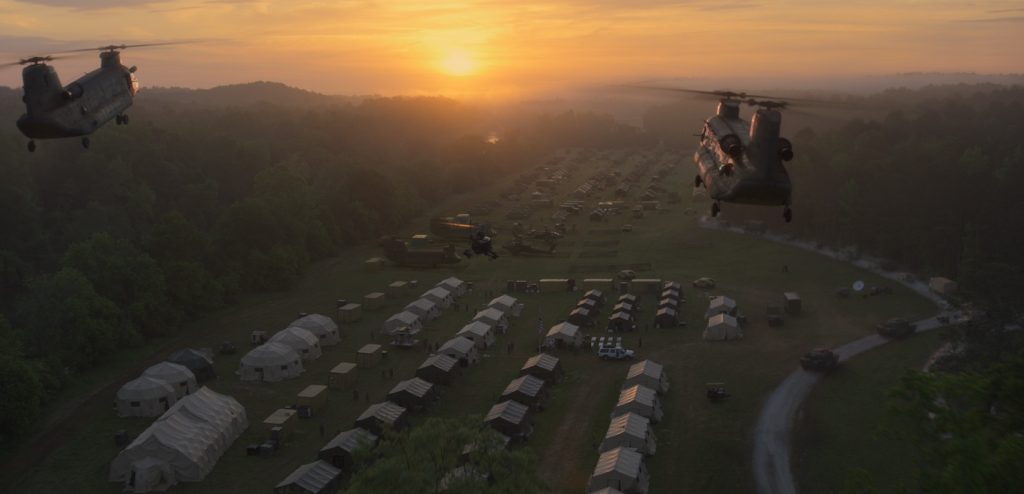

Where’d you source all those tents?
We bought used tents, dirtied them up, and also got some brand-new tents because we wanted a mix. Maybe somebody just got there last week and bought their tent at the hardware store but the next guy’s been there six months and he’s dug in.
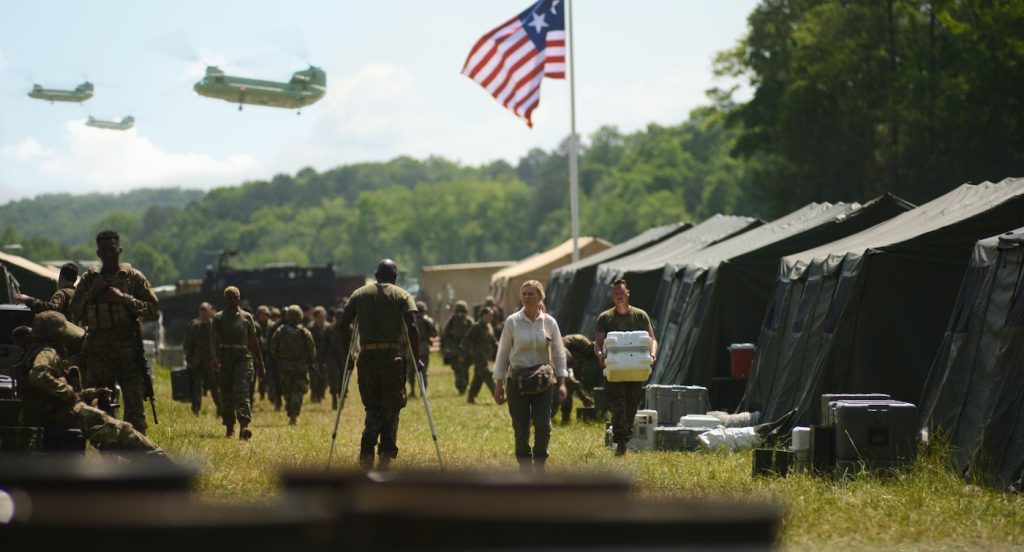

SPOILER ALERT — Then the camera pulls back, and we see that all these people are living inside a huge graffiti-covered sports stadium! Is that VFX, or. . .
No. The stadium was really there outside of Atlanta, and people were really living there. We made arrangements [to take care of them]. It was a horrible place, but there was a certain life there you couldn’t deny. These people are surviving.
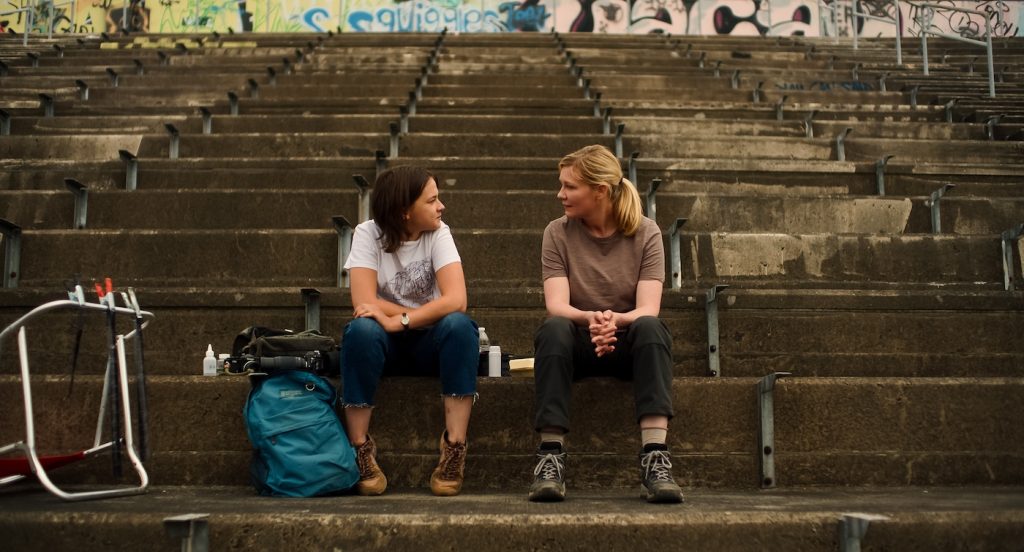

How did there come to be an abandoned stadium in the middle of nowhere?
I don’t think I ever knew. It might have been a college.
And the graffiti?
All there, every bit of it. We didn’t have to do anything.
Next, the reporters happen onto “Winter Wonderland,” this charming theme park with whimsical reindeer statues — but suddenly, snipers start shooting at the reporters. How did you come up with Winter Wonderland?
Alex saw that on a scout and added it to the story. We took pictures, measured it all, made deals with the owner, set it up, and then blew it up.
SPOILER ALERT – Civil War‘s most chilling sequence features Jesse Plemons as a militia man who coolly executes the journalists’ friends. Nearby, a truck dumps dozens of corpses into a hole in the ground.
It was a mass grave. About 40 feet long.
What was it like for you to work on that sequence?
It was hard. Ukraine had just blown up when we started this film. Per Alex’s request, I’d go home at night and look at the footage to see what was happening out there in real-time. My assistant did research on mass graves and gave me a binder three inches thick with twenty or thirty images. Then I had to do a model to figure out how many people we needed, so I went online looking for the right size model people to fill up the model dump truck to figure out how big the mass grave is and how many bodies should go in it. I had to leave my room and take a half-hour walk. It was just too much. Everybody tried to be as calm as they could be, but we all knew this was going to be the toughest scene.
Where did you film that sequence?
We shot it on this incredibly beautiful field by a river with the trees and the breeze, and then you walk over the rise, and there’s this big hole in the ground, and my stomach did flips, even talking about it now. Not because of what it was [in the movie] but because it’s happening in our world as we speak. Right? It’s here. And what we’re filming is [reporters] documenting this tragedy, foretelling — well, not foretelling because we don’t know what’s going to happen — but it felt so real and very heartbreaking.
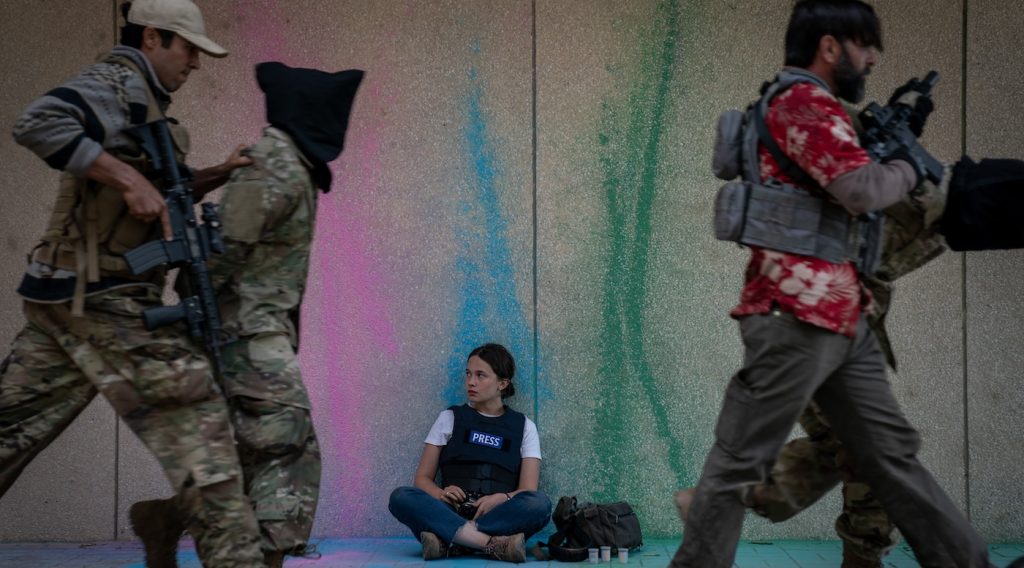

From a technical standpoint, did you populate that open grave with dummies or with real actors?
Both. We actually had several layers. The ones at the very bottom were very rough dummies, just shapes and wigs, not even clothes. Then, more articulated dummies. And then there were real stunt people mixed in with the dummies.
So that top layer, when Jessie [Cailee Spaeny] crawls over corpses to get out of the ditch — that was made up of motionless stunt actors?
Yes. Cailee was so stoic, so brave. All the actors were.
For Civil War‘s third act, your team built a base camp for the “Western Forces,” you combined the streets of Atlanta with blue screen backdrops for the attack on Washington D.C., and you used Tyler Perry’s White House soundstage blended with your own custom-built sets. Looking back on all the work you put into Civil War, what’s your takeaway?
I don’t think the making of this film is ever going to leave me. You’re staring in the face of hate. Every single day. But in the midst of all that horror, it was a beautiful experience.
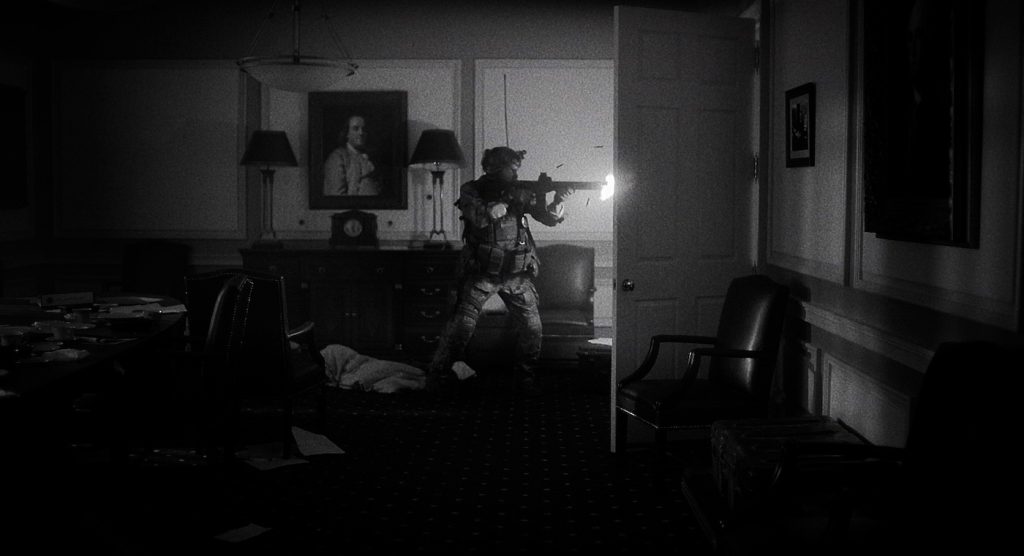

Featured image: An image from “Civil War.” Credit: Courtesy of A24



